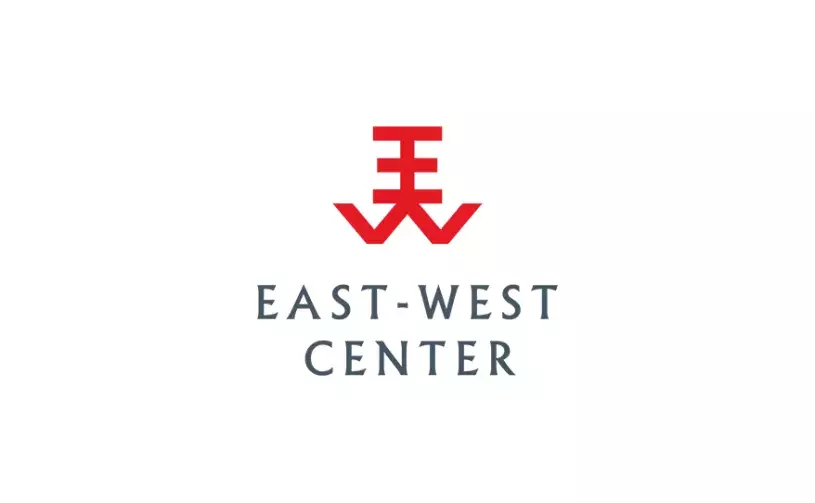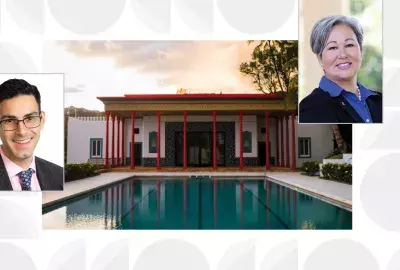Error message

By Kevin M. Woods
HONOLULU (Jan 29, 2019)—Myanmar’s natural resources are intertwined with a long history of armed conflict. The country’s teak forests first enticed the British during the colonial period. Then, leading up to and after independence in 1948, the political exclusion of certain ethnic groups led to the spread of ethno-nationalist insurgencies in the country’s resource-rich frontiers.
Over the years, both government and rebel groups have directly or indirectly financed their insurgent (or counterinsurgent) activities and enriched their leaders through revenue generated from the control of land and the sale of natural resources. These resources include jade, timber, opium poppies, and—more recently—rubber and other agricultural products.
This decade, as the government has embarked on a national peace process, questions loom large over who has ownership rights over what resources and how these resources can be shared more equitably with the local and wider population. Conflict over the control of land and natural resources is particularly pressing in Myanmar’s resource-rich ethnic territories near the borders with China and Thailand. A more robust, accountable, and equitable system for managing resource wealth in these areas is critical if the country is to achieve a lasting peace.
Myanmar’s national government has been trying, unsuccessfully, to gain control over the border areas for years. In the late 1980s, as the Cold War came to a close, some ethnic armed organizations (EAOs) signed ceasefires with the national military (Tatmadaw). Yet these ceasefires never resulted in broad political dialogue or agreement on how land and natural resources would be controlled or profits shared. Instead, the Tatmadaw, the EAOs, and other paramilitary leaders—sometimes independently and sometimes in collaboration—looted a range of natural resources to generate revenue and expand their territorial base in order to gain legitimacy and increase their control over the local economy.
In recent years, the Union Parliament has passed a range of laws and policies aimed at supporting a revival of the nation’s agricultural and resource-based economy. The government has pushed to open the economy to broader participation as part of efforts to attract large-scale foreign investment.
Complementary to these economic reforms, a national peace process aims to end more than 70 years of armed conflict. For the first time since the military took power in the 1960s, incremental institutional reforms have opened new pathways for broader political and economic participation.
As part of this process, the national government and the Tatmadaw have signed a Nationwide Ceasefire Agreement with many EAOs. Some prominent armed groups, particularly in the China borderlands, have refused to participate in the peace process, however, in part because of unresolved issues related to sharing the benefits from of the region’s natural resources. Both EAOs who have signed the Nationwide Ceasefire Agreement and those who continue to fight are united in their call for a decentralized, federal political system that offers greater opportunities for ethnic self-determination and regional management of natural-resource wealth.
In spite of recent attempts at reform, illicit resource extraction and “land grabs” continue, increasingly taking the form of “crony capitalism.” A Yangon company, often with international partners and close ties to the military, receives a concession to extract natural resources or initiate a commercial agricultural project on a tract of land near the Thai or Chinese border. The revenues generated from such a project are generally undisclosed and often bypass government treasuries.
Local EAOs and other paramilitary groups often get their cut. For example, the Tatmadaw- and state-owned economic enterprises largely orchestrate logging and jade mining enterprises in the northern borderlands. The timber and jade are then exported across the border with China, and local EAOs attempt to tax the trade as it passes through their territories.
At all stages, opportunities for corruption are rife. Many of the profits generated from exploitation of Myanmar’s natural resources find their way into personal bank accounts, oftentimes located in Singapore.
When the government grants an economic concession to a commercial company, the Tatmadaw’s security forces militarize the perimeter of the concession area and secure a corridor to the nearest main road. This ensures that non-cooperating EAOs and local villagers cannot gain easy access. Villagers whose lands are part of the concession area are forcibly removed, often with no or very little financial compensation and usually with no site designated for relocation.
In many cases, the creation of militarized zones around concession sites has led to violence against local populations still in the vicinity. The list of abuses exacerbates economic and political grievances among local ethnic-minority populations, which in turn can increase support for the EAO operating in the area. In these cases, local populations often perceive the EAOs as the best available protection against abuses by the national government and military. Such a situation hardly looks or feels like a “peace process.”
In fact, the land and resource sectors have received very little attention in Myanmar’s ongoing peace dialogues. As a result, core political questions—who has use and management rights over the country’s natural resources, and how will the revenues from their exploitation be distributed—remain unresolved and therefore continue to fuel armed conflict.
Yet land and natural resources—and the sound management of access and ownership rights—can affect the peace process in two prominent ways. First, the extraction, production, tax, and trade in natural resources and commercial crops often finance armed groups, prolonging conflict and providing incentives to maintain the status quo. Cutting off resource revenues to these groups would have an immediate effect on the dynamics, duration, and motivations for armed conflict among all stakeholders.
Second, to be successful, the peace process must promote political dialogue that clarifies who has rights to the use and management of Myanmar’s resources and how revenue and other benefits from these resources will be distributed. Today the country needs strong political will and meaningful dialogue to create an equitable resource-management system that achieves widespread acceptance and puts an end to one of the world’s longest civil wars.
Kevin M. Woods is a political ecologist and human geographer who specializes in land and natural resource management and governance reform in ethnic conflict areas. Currently an Adjunct Senior Fellow at the East-West Center, he can be reached at [email protected]. This East-West Wire is based on Kevin M. Woods (2018), “The conflict resource economy and pathways to peace in Burma,” Peaceworks No. 144, United States Institute of Peace, Washington, D.C.
Download a pdf version of this Wire article.
##
The East-West Wire is a news, commentary, and analysis service provided by the East-West Center in Honolulu. All or any part of the Wire content may be used by media with attribution to the East-West Center or the person quoted. To receive Wire articles via email, subscribe here. For links to all East-West Center media programs, fellowships and services, see EastWestCenter.org/Journalists.
The full list of East-West Wires produced by the Research Program is available on the East-West Center website at EastWestCenter.org/Research-Wire. For more on the East-West Center Research Program, see EastWestCenter.org/Research.
The East-West Center promotes better relations and understanding among the people and nations of the United States, Asia, and the Pacific through cooperative study, research, and dialogue.
Series editors:
Derek Ferrar
[email protected]
Sidney B. Westley
[email protected]
By Kevin M. Woods
HONOLULU (Jan 29, 2019)—Myanmar’s natural resources are intertwined with a long history of armed conflict. The country’s teak forests first enticed the British during the colonial period. Then, leading up to and after independence in 1948, the political exclusion of certain ethnic groups led to the spread of ethno-nationalist insurgencies in the country’s resource-rich frontiers.
Over the years, both government and rebel groups have directly or indirectly financed their insurgent (or counterinsurgent) activities and enriched their leaders through revenue generated from the control of land and the sale of natural resources. These resources include jade, timber, opium poppies, and—more recently—rubber and other agricultural products.
This decade, as the government has embarked on a national peace process, questions loom large over who has ownership rights over what resources and how these resources can be shared more equitably with the local and wider population. Conflict over the control of land and natural resources is particularly pressing in Myanmar’s resource-rich ethnic territories near the borders with China and Thailand. A more robust, accountable, and equitable system for managing resource wealth in these areas is critical if the country is to achieve a lasting peace.
Myanmar’s national government has been trying, unsuccessfully, to gain control over the border areas for years. In the late 1980s, as the Cold War came to a close, some ethnic armed organizations (EAOs) signed ceasefires with the national military (Tatmadaw). Yet these ceasefires never resulted in broad political dialogue or agreement on how land and natural resources would be controlled or profits shared. Instead, the Tatmadaw, the EAOs, and other paramilitary leaders—sometimes independently and sometimes in collaboration—looted a range of natural resources to generate revenue and expand their territorial base in order to gain legitimacy and increase their control over the local economy.
In recent years, the Union Parliament has passed a range of laws and policies aimed at supporting a revival of the nation’s agricultural and resource-based economy. The government has pushed to open the economy to broader participation as part of efforts to attract large-scale foreign investment.
Complementary to these economic reforms, a national peace process aims to end more than 70 years of armed conflict. For the first time since the military took power in the 1960s, incremental institutional reforms have opened new pathways for broader political and economic participation.
As part of this process, the national government and the Tatmadaw have signed a Nationwide Ceasefire Agreement with many EAOs. Some prominent armed groups, particularly in the China borderlands, have refused to participate in the peace process, however, in part because of unresolved issues related to sharing the benefits from of the region’s natural resources. Both EAOs who have signed the Nationwide Ceasefire Agreement and those who continue to fight are united in their call for a decentralized, federal political system that offers greater opportunities for ethnic self-determination and regional management of natural-resource wealth.
In spite of recent attempts at reform, illicit resource extraction and “land grabs” continue, increasingly taking the form of “crony capitalism.” A Yangon company, often with international partners and close ties to the military, receives a concession to extract natural resources or initiate a commercial agricultural project on a tract of land near the Thai or Chinese border. The revenues generated from such a project are generally undisclosed and often bypass government treasuries.
Local EAOs and other paramilitary groups often get their cut. For example, the Tatmadaw- and state-owned economic enterprises largely orchestrate logging and jade mining enterprises in the northern borderlands. The timber and jade are then exported across the border with China, and local EAOs attempt to tax the trade as it passes through their territories.
At all stages, opportunities for corruption are rife. Many of the profits generated from exploitation of Myanmar’s natural resources find their way into personal bank accounts, oftentimes located in Singapore.
When the government grants an economic concession to a commercial company, the Tatmadaw’s security forces militarize the perimeter of the concession area and secure a corridor to the nearest main road. This ensures that non-cooperating EAOs and local villagers cannot gain easy access. Villagers whose lands are part of the concession area are forcibly removed, often with no or very little financial compensation and usually with no site designated for relocation.
In many cases, the creation of militarized zones around concession sites has led to violence against local populations still in the vicinity. The list of abuses exacerbates economic and political grievances among local ethnic-minority populations, which in turn can increase support for the EAO operating in the area. In these cases, local populations often perceive the EAOs as the best available protection against abuses by the national government and military. Such a situation hardly looks or feels like a “peace process.”
In fact, the land and resource sectors have received very little attention in Myanmar’s ongoing peace dialogues. As a result, core political questions—who has use and management rights over the country’s natural resources, and how will the revenues from their exploitation be distributed—remain unresolved and therefore continue to fuel armed conflict.
Yet land and natural resources—and the sound management of access and ownership rights—can affect the peace process in two prominent ways. First, the extraction, production, tax, and trade in natural resources and commercial crops often finance armed groups, prolonging conflict and providing incentives to maintain the status quo. Cutting off resource revenues to these groups would have an immediate effect on the dynamics, duration, and motivations for armed conflict among all stakeholders.
Second, to be successful, the peace process must promote political dialogue that clarifies who has rights to the use and management of Myanmar’s resources and how revenue and other benefits from these resources will be distributed. Today the country needs strong political will and meaningful dialogue to create an equitable resource-management system that achieves widespread acceptance and puts an end to one of the world’s longest civil wars.
Kevin M. Woods is a political ecologist and human geographer who specializes in land and natural resource management and governance reform in ethnic conflict areas. Currently an Adjunct Senior Fellow at the East-West Center, he can be reached at [email protected]. This East-West Wire is based on Kevin M. Woods (2018), “The conflict resource economy and pathways to peace in Burma,” Peaceworks No. 144, United States Institute of Peace, Washington, D.C.
Download a pdf version of this Wire article.
##
The East-West Wire is a news, commentary, and analysis service provided by the East-West Center in Honolulu. All or any part of the Wire content may be used by media with attribution to the East-West Center or the person quoted. To receive Wire articles via email, subscribe here. For links to all East-West Center media programs, fellowships and services, see EastWestCenter.org/Journalists.
The full list of East-West Wires produced by the Research Program is available on the East-West Center website at EastWestCenter.org/Research-Wire. For more on the East-West Center Research Program, see EastWestCenter.org/Research.
The East-West Center promotes better relations and understanding among the people and nations of the United States, Asia, and the Pacific through cooperative study, research, and dialogue.
Series editors:
Derek Ferrar
[email protected]
Sidney B. Westley
[email protected]
East-West Wire
News, Commentary, and Analysis
The East-West Wire is a news, commentary, and analysis service provided by the East-West Center in Honolulu. Any part or all of the Wire content may be used by media with attribution to the East-West Center or the person quoted. To receive East-West Center Wire media releases via email, subscribe here.
For links to all East-West Center media programs, fellowships and services, see www.eastwestcenter.org/journalists.







